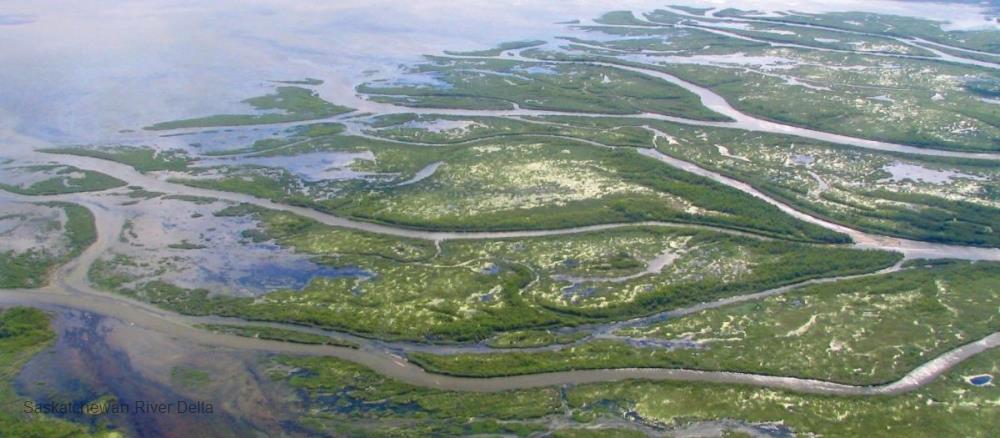
Related items loading ...
Section 1: Publication
Publication Type
Conference Presentation
Authorship
Cardenas Ana, Challis Jonathan K., Ji Xiaowen, Giesy John P., Brinkmann Markus
Title
Impacts of wastewater effluents and seasonal trends of emerging contaminant in water and sediments of two cold-region rivers
Year
2022
Publication Outlet
AOSM2022
DOI
ISBN
ISSN
Citation
Ana Cardenas, Jonathan K. Challis, Xiaowen Ji, John P. Giesy, Markus Brinkmann (2022). Impacts of wastewater effluents and seasonal trends of emerging contaminant in water and sediments of two cold-region rivers. Proceedings of the GWF Annual Open Science Meeting, May 16-18, 2022.
Abstract
Emerging contaminants such as pharmaceutical drugs have been detected in waters across the globe. The majority of pharmaceuticals are found at trace concentrations, but the continuous use and potential accumulation of some of these compounds can lead to potential effects in aquatic organisms, due to their continuous release, high biological efficacy, and possible accumulation in aquatic organisms. Wastewater treatment plants are not designed to remove pharmaceuticals, so these compounds are virtually unattained before the treated water is discharged. Consequently, WWTPs’ management have a key role in the removal and monitoring of pharmaceutical products with challenges related to the polar nature of these chemicals that facilitate their presence in different environmental compartments. Pharmaceutical concentrations can be affected by temporal variations, the flow velocity of water receptors, the sorption capacity of sediments, and other abiotic dynamics in aquatic ecosystems. Currently, most experimental approaches have not considered these dynamics to evaluate the chemical activity, bioavailability, and toxicity of pharmaceuticals. The principal aim of this research is to enhance our understanding of the environmental risks associated with pharmaceuticals as one group of emerging contaminants. To this end, the presence of a suite of representative pharmaceuticals was measured upstream and downstream of two WWTPs located in the South Saskatchewan River basin and Wascana Creek, Saskatchewan, Canada, during three sampling campaigns (spring, summer, and fall of 2021), through both conventional and passive water sampling. According to the chemical analysis conducted, Amitriptyline with a concentration of 3353.8 ng/L was the most abundant compound in comparison to the other pharmaceuticals evaluated in the water and sediment samples at the four sampling sites and across the three seasons. Generally, concentrations of analytes were higher downstream of WWTPs compared to upstream sites. The data collected from this monitoring campaign indicates widespread contamination with psychoactive pharmaceuticals, which can have marked impacts in exposed organisms.
Plain Language Summary
Section 2: Additional Information
Program Affiliations
Project Affiliations
Submitters
|
ANA CARDENAS | Submitter/Presenter | asc245@usask.ca | University of Saskatchewan |
Publication Stage
N/A
Theme
Water Quality and Aquatic Ecosystems
Presentation Format
10-minute oral presentation
Additional Information
AOSM2022 First Author: Ana Cardenas, ASchool of Environment and Sustainability, University of Saskatchewan, 117 Science Place Saskaton, Saskatoon, SK S7N 5C8, Canada Additional Authors: Ana Sharelys Cardenas PerezAVAA,B, Jonathan K. ChallisC, Xiaowen JiA,B, John P. GiesyC,E,F,G,H,I, Markus BrinkmannA,B,C,D* ASchool of Environment and Sustainability, University of Saskatchewan, 117 Science Place Saskaton, Saskatoon, SK S7N 5C8, Canada BGlobal Institute for Water Security, University of Saskatchewan, Innovation Blvd, Saskatoon, SK S7N 3H5, Canada CToxicology Centre, University of Saskatchewan, 44 Campus Dr, Saskatoon, SK S7N 5B3, Canada DCentre for Hydrology, University of Saskatchewan, 101 - 121 Research Drive, Saskatoon, SK S7N 1K2, Canada jDepartment of Veterinary Biomedical Sciences, University of Saskatchewan, 52 Campus Dr, Saskatoon, SK S7N 5B4, Canada kDepartment of Environmental Sciences, Baylor University, Waco, Waco, TX 76706, United States. lDepartment of Zoology and Center for Integrative Toxicology, Michigan State University, 426 Auditorium Road East Lansing, MI 48824, USA.


 GWFNet
GWFNet Master
Master Data
Data Research
Research Map
Map
 Advanced
Advanced Tools
Tools
 . . .
. . .
 Metadata Editor
Metadata Editor
 Record List
Record List
 Alias List Editor
Alias List Editor
 Legacy sites
Legacy sites